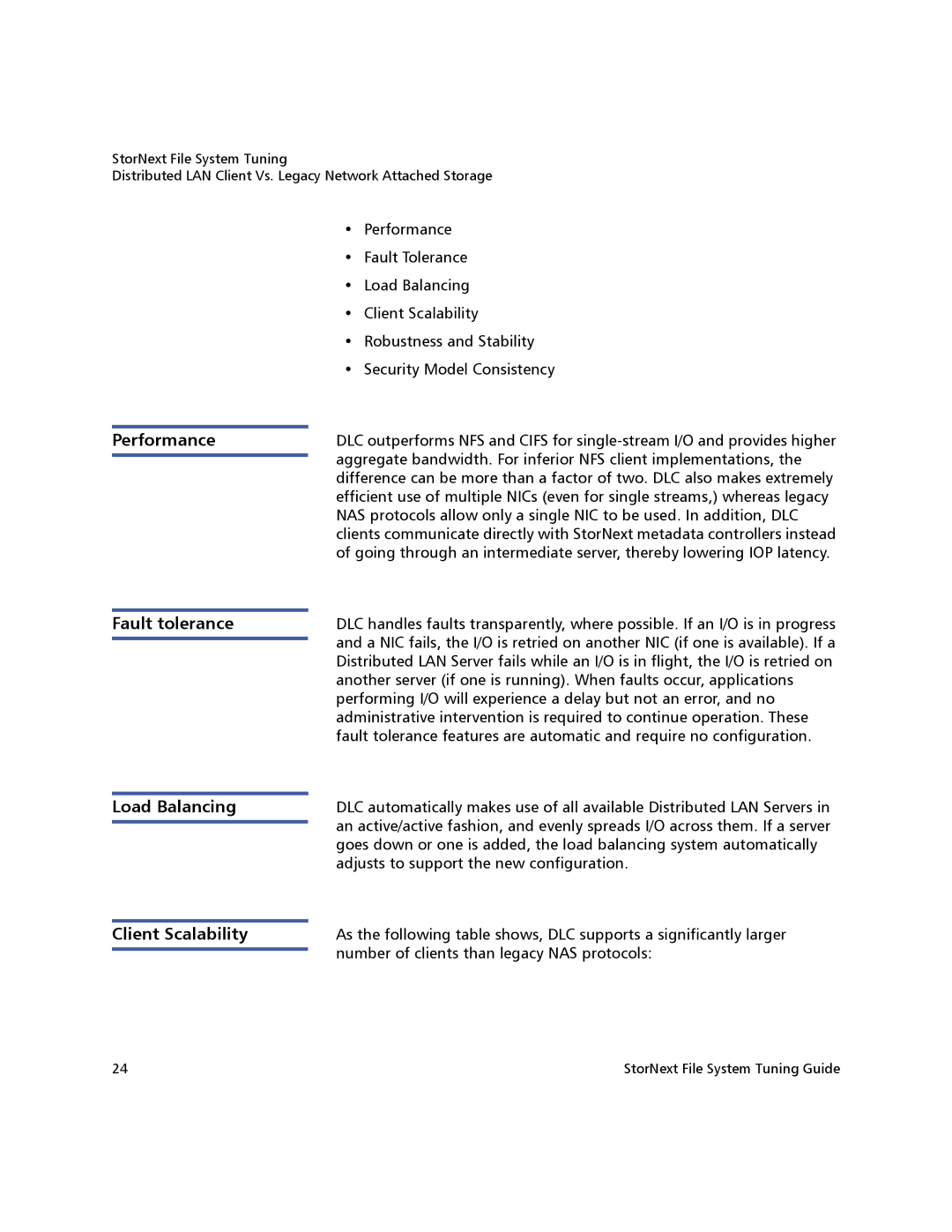
StorNext File System Tuning
Distributed LAN Client Vs. Legacy Network Attached Storage
Performance
•Performance
•Fault Tolerance
•Load Balancing
•Client Scalability
•Robustness and Stability
•Security Model Consistency
DLC outperforms NFS and CIFS for
Fault tolerance
DLC handles faults transparently, where possible. If an I/O is in progress and a NIC fails, the I/O is retried on another NIC (if one is available). If a Distributed LAN Server fails while an I/O is in flight, the I/O is retried on another server (if one is running). When faults occur, applications performing I/O will experience a delay but not an error, and no administrative intervention is required to continue operation. These fault tolerance features are automatic and require no configuration.
Load Balancing
Client Scalability
DLC automatically makes use of all available Distributed LAN Servers in an active/active fashion, and evenly spreads I/O across them. If a server goes down or one is added, the load balancing system automatically adjusts to support the new configuration.
As the following table shows, DLC supports a significantly larger number of clients than legacy NAS protocols:
24 | StorNext File System Tuning Guide |
